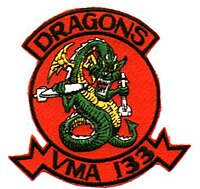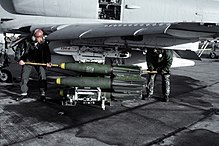| Marine Attack Squadron 133 | |
|---|---|
 VMA-133 Insignia | |
| Active | 1 May 1943 –1 August 1945 15 April 1958 –30 September 1992 |
| Allegiance | |
| Branch | |
| Type | Fighter squadron |
| Role | Close air support Air interdiction |
| Nickname(s) | Dragons Flying Eggbeaters (WWII) Golden Gaters (Vietnam Era) |
| Tail Code | ME |
| Engagements | World War II Bougainville campaign (1943–45) Philippines campaign (1944–45) |
| Aircraft flown | |
| Attack | Douglas A-4 Skyhawk |
| Bomber | Grumman TBF Avenger |
Marine Attack Squadron 133 (VMA-133) was a reserve A-4 Skyhawk fighter squadron in the United States Marine Corps. Originally known as VMSB-133, the squadron saw combat during the World War II at Bougainville and the Philippines. Following the war, the squadron became part of the Marine Forces Reserve. Also known as the "Dragons", VMA-133 was part of Marine Aircraft Group 42 of the 4th Marine Aircraft Wing and was based out of Naval Air Station Alameda, California. The squadron was deactivated in 1992 as part of the post Cold War drawdown of the U.S. Military.


